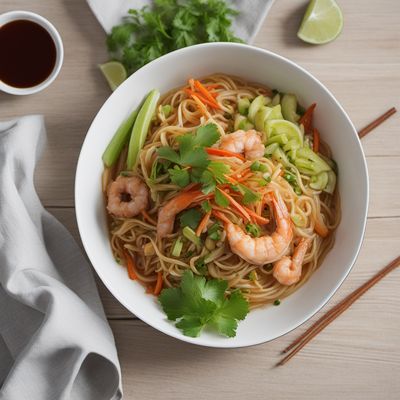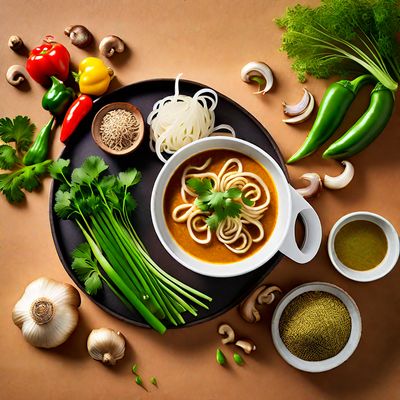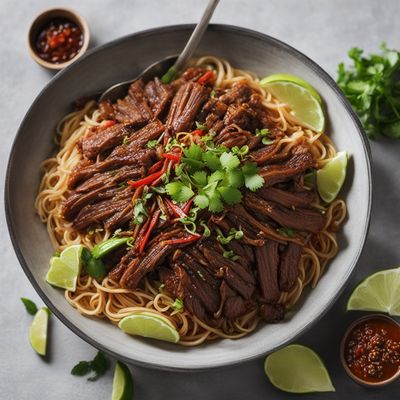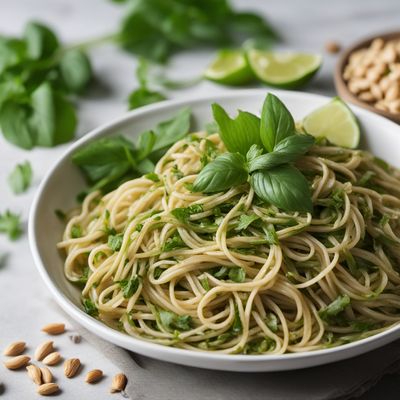
Ingredient
Dried egg pasta
The Versatile Pasta
Dried egg pasta is made by combining durum wheat semolina with eggs, resulting in a rich and flavorful pasta. It has a smooth texture and a vibrant yellow color. When cooked, it has a tender yet slightly chewy bite. Its porous surface allows it to absorb sauces, making it perfect for dishes like carbonara or bolognese.
Origins and history
The origins of dried egg pasta can be traced back to Italy, where it has been a traditional staple for centuries. It is believed to have originated in the Emilia-Romagna region, particularly in Bologna. Dried egg pasta gained popularity due to its ability to be stored for longer periods compared to fresh pasta. Today, it is enjoyed worldwide and is a key ingredient in various Italian dishes.
Nutritional information
Dried egg pasta is a good source of carbohydrates and protein. It also contains essential vitamins and minerals such as iron and B vitamins. A 2-ounce (56g) serving of dried egg pasta provides approximately 200 calories.
Allergens
Contains wheat and eggs.
How to select
When selecting dried egg pasta, look for a brand that uses high-quality durum wheat semolina and fresh eggs. The pasta should have a vibrant yellow color and a smooth texture. Avoid packages that show signs of moisture or clumping, as this may indicate poor quality or improper storage.
Storage recommendations
To maintain the freshness and quality of dried egg pasta, store it in an airtight container in a cool, dry place. Avoid exposure to moisture, as it can cause the pasta to become sticky or moldy. Properly stored, dried egg pasta can last for up to a year.
How to produce
Dried egg pasta can be produced at home by combining durum wheat semolina and eggs. The dough is kneaded until smooth, rolled out, and cut into desired shapes. It is then left to dry before being stored or cooked.
Preparation tips
Dried egg pasta can be boiled until al dente and used in a variety of dishes such as pasta salads, soups, or as a base for sauces. It pairs well with both light and hearty sauces, allowing for endless culinary possibilities. To enhance the flavor, cook the pasta in well-salted water. Remember to reserve some pasta cooking water to add to the sauce for better consistency.
Substitutions
Fresh egg pasta, whole wheat pasta, or gluten-free pasta can be used as substitutes for dried egg pasta. Each will provide a slightly different texture and flavor to the dish, but they can still be delicious alternatives.
Culinary uses
Dried egg pasta is commonly used in classic Italian dishes such as spaghetti carbonara, fettuccine alfredo, or lasagna. It is also a popular choice for pasta salads and baked pasta dishes. Its versatility allows it to be paired with a wide range of ingredients, from simple tomato sauces to rich meat ragùs.
Availability
Dried egg pasta is widely available in grocery stores and supermarkets, especially in regions with a strong Italian culinary influence. It can also be found in specialty Italian food stores or purchased online.
More ingredients from this category
Recipes using Dried egg pasta » Browse all

Homestyle Pancit Lomi
Savory Comfort: Homestyle Pancit Lomi Recipe

Malaysian Spicy Noodle Soup
Fiery Delight: Malaysian Spicy Noodle Soup

Bavarian Laksa
Bavarian Spiced Coconut Soup with Noodles

Malay-style Chilled Noodles with Spicy Peanut Sauce
Serenade of Coolness: Malay-inspired Chilled Noodles with Fiery Peanut Sauce

Authentic Indonesian Mie Kocok Recipe
Savory Delight: Indonesian Mie Kocok - A Noodle Soup to Savor

Wakayama Ramen with Tender Pork and Rich Broth
Umami Delight: Savory Wakayama Ramen with Succulent Pork

Fettuccine Burro e Parmigiano
Silky Butter and Parmesan Noodles

Spicy Sichuan Noodles with Ground Pork
Fiery Sichuan Delight: Spicy Noodles with Savory Ground Pork

Bosnian-style Spicy Fish Soup
Sarajevo's Fiery Fish Delight

Vegetarian Sopa de Pollo y Fideos
Hearty Vegetable Noodle Soup

Bruneian-style Stuffed Ears
Savor the Delight of Bruneian Stuffed Ears

Southeast Asian Pesto Noodles
Lemongrass Infused Pesto Noodles: A Southeast Asian Twist on a Classic Italian Dish
